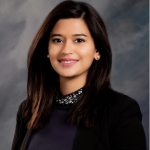
Reflections from a Medical Student Part I: Street Medicine
My first year of medical school took place during a worldwide pandemic. While I reflect on the medical school learning experience in the next part of the blog, I wanted to write about a very special part of my unique first-year experience: volunteering with our Street Medicine Interest Group. Street Medicine was one of the only groups on our campus that met in-person because we were actively providing services for vulnerable populations. Having had experience with volunteering at a local community hospital and desiring human interaction as well as the ability to practice some essential medical techniques, I became a part of the group.
As mentioned in my other blogs, I live in San Bernardino County. Our county is the largest county in landmass in the US; it also has one of the highest poverty rates in the state of California. Our state has also been dealing with the humanitarian crisis of homelessness. Just west of us, Los Angeles has the greatest number of unsheltered unhoused populations in the country. According to our 2020 Point-In-Time Count, there was a 19.9 percent increase in homelessness in our county between 2019 and 2020 (1).
Our student group partners with local nursing students to provide a range of services to individuals who receive free hot meals from a local non-profit. We set up tents and tables in the patio area where we check vitals, take blood glucose readings, care for wounds, and provide hygiene items such as masks, hand sanitizers, and sunscreen.
Growing up in the rural midwest, I recall shadowing at the hospitals where health literacy was low. Patients often didn’t understand the purpose of vitals, let alone the reference ranges. Yet, now, many of the individuals we serve at the center seem more than knowledgeable about the services we provide. Many are often able to provide a complete family history, reciting chronic diseases that may run in the family as well as the medications and dosing that their parents, aunts/uncles, and grandparents required. Sometimes, the patients request certain services such as blood glucose or oxygen saturation readings on their own. Almost all the people who visit our tent wear their masks and most tell us that they have been vaccinated.
The people we see often have elevated blood pressure, elevated (compared to the reference range) glucose levels within 1 hour of eating, and cuts and bruises all over their hands and feet. Many have jobs but no permanent place to call home. They often tell us stories about “things falling through” in their effort to secure housing. They are aware of the needs of their body, understanding that sugary substances and processed items are not good for them; yet, many are unable to do much about it given their circumstances. They are conscientious about what they need to do to stay safe from COVID-19. On a few occasions, we have been able to recommend people to urgent care clinics after noting alarming vital signs. While we are not able to follow-up, a lady who recently visited us thanked us for catching the signs and symptoms early and let us know that her friend was hospitalized for a severe infection in a timely fashion.
We started last year and made an effort to show up as often as possible in order to build trust with our community. Many individuals now rely on our help and our recommendations. They yearn for us to see them as human beings who have families and stories. They trust us not to judge them. What touches me the most is how kind and thoughtful each and every person is. They exude gratefulness in their smiles and demeanor, despite what they are going through in life. These community members remind us of the “why” of our journeys.
And as satisfying as the experiences are, they are only once a month. Unfortunately, street medicine is a small band-aid. We must address the bigger issues: housing, income inequality, incarceration, poverty, lack of education, lack of health insurance, a broken healthcare system, and the lack of a robust public health infrastructure (2).
This year, Assembly Bill 369 is making its way to our state legislature. Among other things, the bill would allow for Medi-Cal to be a funding source for street medicine. Many of us will be advocating for the bill as it holds the power to increase the weight of street medicine programs throughout the state. Our program arose at a time when healthcare systems were overwhelmed with covid cases. We played an important role in filling one of the many gaps in our healthcare system.
Yet, again, as I think about a woman with two children who came to us with an infected wound on her foot from her ill-fitting flip-flops that she wore while walking from one job site to the next, I am continuously reminded that our system has failed in many ways. In order to improve health outcomes, we must improve the system.
References:
HPHR.org was designed by ComputerAlly.com.
Visit HPHR’s publisher, the Boston Congress of Public Health (BCPH).
Email communications@bcph.org for more information.

Click below to make a tax-deductible donation supporting the educational initiatives of the Boston Congress of Public Health, publisher of HPHR Journal.![]()